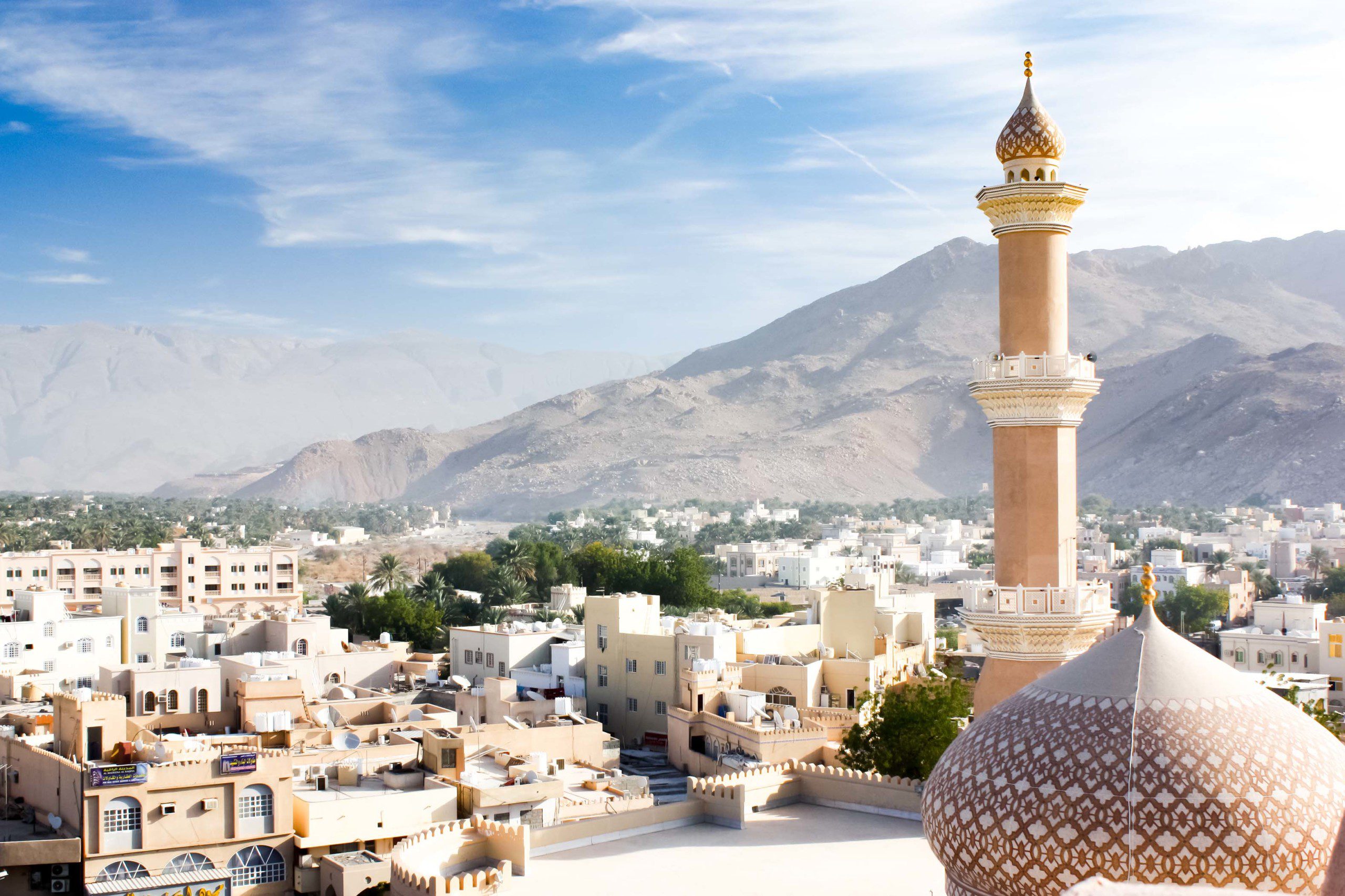Oman in February is the perfect time to uncover the country’s unique charm, where temperatures range from a comfortable 18°C to 26°C, creating an inviting backdrop for exploration. From the rugged Hajar Mountains to the pristine beaches of Salalah, Oman’s diverse landscapes beckon travelers.
With the pleasant weather lending itself to adventures like desert safaris and souk visits, this guide shows how February offers an unparalleled opportunity to experience the authentic beauty of Arabia.
Weather in February
February brings ideal weather conditions to Oman, making it perfect for outdoor exploration:
| Weather Element | Details |
| Temperature Range | 17°C – 26°C (63°F – 79°F) |
| Humidity | 50% – 60% |
| Daylight | 9-10 hours daily |
| Rainfall | Minimal (5-10mm average) |
| Sea temperature | 24°C (75°F) |
The pleasant temperatures and clear skies create perfect conditions for desert safaris, mountain treks, and coastal adventures. Evenings can be cooler, especially in mountainous regions like Jebel Akhdar, so light layers are recommended.
Is February a good time to visit Oman?
February is an excellent time to visit Oman, characterized by mild weather, vibrant landscapes, and rich cultural experiences.
1. Pleasant Weather Conditions
February in Oman offers comfortable temperatures, typically ranging from 18°C to 28°C (64°F to 82°F), making it ideal for outdoor exploration. The cooler climate allows visitors to enjoy activities without the intense heat that characterizes the summer months.
2. Stunning Natural Landscapes
This month marks the peak of the wildflower season in Oman, particularly in regions like Jebel Akhdar and the Dhofar region. The landscape bursts into bloom, providing breathtaking views of colorful flora against the backdrop of rugged mountains and desert vistas.
3. Cultural Events and Festivals
February hosts several cultural events, including the Muscat Festival, which showcases Omani heritage through traditional music, dance, crafts, and cuisine. This festival offers a unique opportunity to immerse oneself in Omani culture and interact with locals.
4. Adventure Opportunities
The pleasant weather makes February perfect for outdoor adventures such as hiking in the Hajar Mountains, exploring the Wahiba Sands desert, or visiting the stunning coastline along the Arabian Sea. Activities like snorkeling and diving are also popular during this time due to clear waters and abundant marine life.
Overall, February is a prime month for experiencing Oman’s natural beauty and cultural richness.
Cultural Experiences and Festivals in Oman in February
Oman in February offers a rich tapestry of cultural experiences and festivals that reflect its deep-rooted traditions and vibrant heritage.
Throughout the year, various celebrations showcase the country’s unique identity, with the Muscat Festival standing out as a highlight.
These festivals not only provide entertainment but also offer a glimpse into the daily lives and customs of the Omani people, making them an essential part of any visit to this enchanting destination.
- Muscat Festival (usually runs through February):
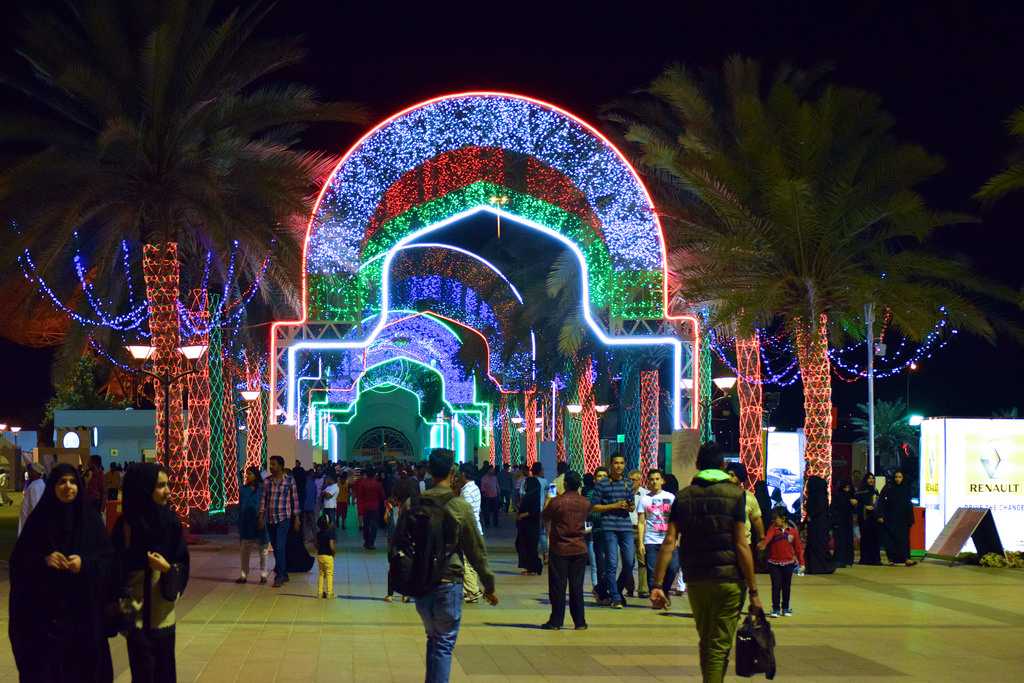
The Muscat Festival, typically held from January to February, is a vibrant month-long celebration showcasing Omani culture through traditional music, dance, crafts, and cuisine.
Best Time to Visit: The Muscat Festival typically takes place from late January to late February, making this period an ideal time to experience the festivities when the weather is pleasant and suitable for outdoor activities.
Pro Tips:
- Arrive early to enjoy the various cultural performances, food stalls, and craft exhibitions without the crowds.
- Keep an eye on children in the busy festival areas to ensure their safety and enjoyment.
- Sultan Qaboos Grand Mosque: Visit early morning for the best experience

The Sultan Qaboos Grand Mosque in Muscat, Oman, is a remarkable example of modern Islamic architecture, completed in 2001 and covering 416,000 square meters. With its main prayer hall accommodating 6,500 worshippers, stunning central dome, five minarets, and an exquisite hand-woven Persian carpet, the mosque beautifully showcases Oman’s rich cultural heritage and artistic craftsmanship.
Best Time to Visit: The Sultan Qaboos Grand Mosque is open to non-Muslim visitors from 8:00 AM to 11:00 AM, Saturday through Thursday, making these morning hours the best time to explore the mosque’s stunning architecture and serene atmosphere.
Pro Tips:
- Arrive right at 8:00 AM to avoid crowds and enjoy a more peaceful experience.
- Dress modestly, ensuring women cover their hair with a scarf, and be prepared to remove your shoes before entering.
- Mutrah Souq: One of the oldest marketplaces in the Arab world

Immerse yourself in Omani culture by wandering through the vibrant Muttrah Souq. This traditional market is perfect for picking up local handicrafts, spices, and frankincense while enjoying the lively atmosphere and engaging with friendly vendors.
Best Time to Visit: The Mutrah Souq is best visited during the cooler months from November to March, when temperatures are more comfortable for exploring the market. The souq is lively in the evenings, particularly on weekends, making it an ideal time to experience the vibrant atmosphere.
Pro Tips:
- Arrive early in the morning or just before closing to avoid crowds and enjoy a more relaxed shopping experience.
- Bargaining is expected, so don’t hesitate to negotiate prices with vendors to get the best deals.
- Nizwa Friday Market: Traditional livestock and handicraft market
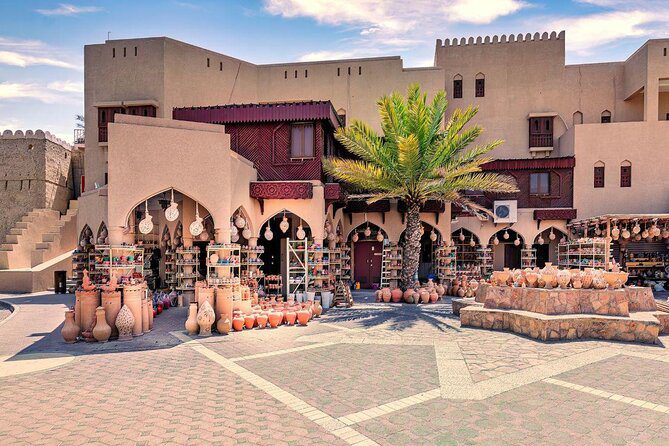
The Nizwa Friday Market is a lively traditional market in Oman, renowned for its vibrant atmosphere where locals gather to buy and sell livestock, handicrafts, and fresh produce. This weekly event, held every Friday morning from around 6:00 AM to 9:00 AM, features a bustling goat auction that attracts buyers and sellers from the surrounding areas, providing an authentic glimpse into Omani culture and traditions.
Best Time to Visit: Arriving early on Friday mornings is ideal to experience the full excitement of the livestock auctions and to explore the various stalls before the crowds arrive.
Pro Tips:
- Dress modestly and be respectful of local customs while taking photos.
- Keep an eye on young children in the busy market to ensure their safety.
- Bahla Fort: UNESCO World Heritage site showcasing ancient Omani architecture
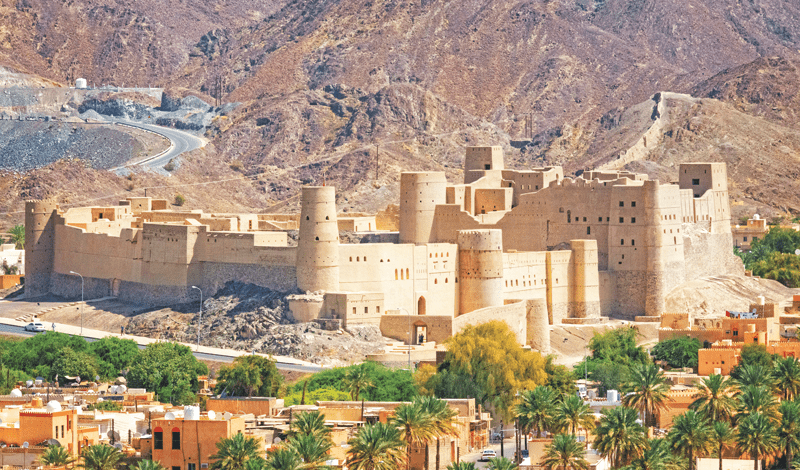
Bahla Fort, a UNESCO World Heritage site in Oman, is a remarkable example of ancient Omani architecture, showcasing the impressive mud-brick construction techniques of the 17th century. Surrounded by a 13-kilometer city wall, this historic fortress offers visitors a glimpse into the region’s rich cultural heritage and features stunning views of the nearby palm groves and mountains.
Best Time to Visit: The ideal time to visit Bahla Fort is during the cooler months from November to March when temperatures are more comfortable for exploring the site.
Pro Tips:
- Arrive early in the day to avoid crowds and enjoy a more peaceful experience while exploring the fort’s intricate architecture.
- Wear comfortable shoes, as there are many stairways and uneven surfaces to navigate within the fort.
Must-Visit Destinations in Oman
Oman boasts a range of iconic destinations that showcase its rich history and stunning landscapes.
The Sultan Qaboos Grand Mosque in Muscat is renowned for its grand architecture, while Nizwa Fort offers insights into the country’s past with its impressive round tower.
Natural Wonders
-
Wahiba Sands:
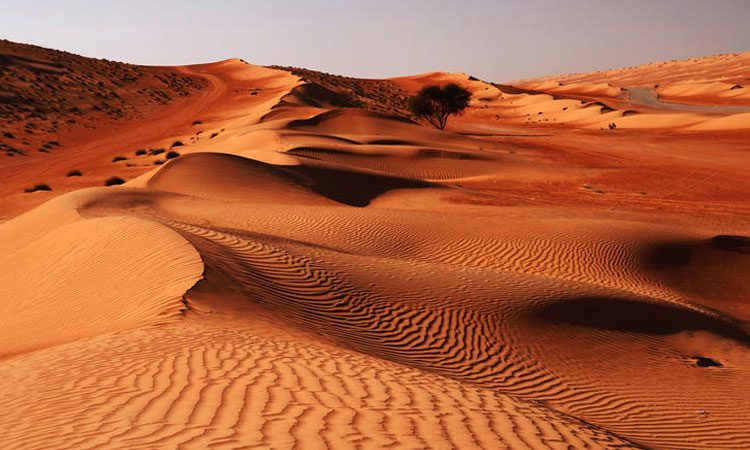
Experience the exhilarating adventure of dune bashing, where skilled drivers navigate the undulating sands of the desert, creating an adrenaline-pumping ride filled with twists and turns. After the excitement, unwind with a serene desert camping experience under the vast, starry skies, as February’s cool weather enhances the charm and comfort of your evening in nature.
-
Jebel Akhdar (Green Mountain):

This idyllic location serves as a haven for hikers and nature lovers, boasting an array of picturesque trails that meander through stunning landscapes filled with vibrant flora and fauna. Along these scenic routes, visitors can also discover quaint villages, each brimming with local charm, inviting cafes, and opportunities to experience the rich cultural heritage of the region.
-
Bimmah Sinkhole:
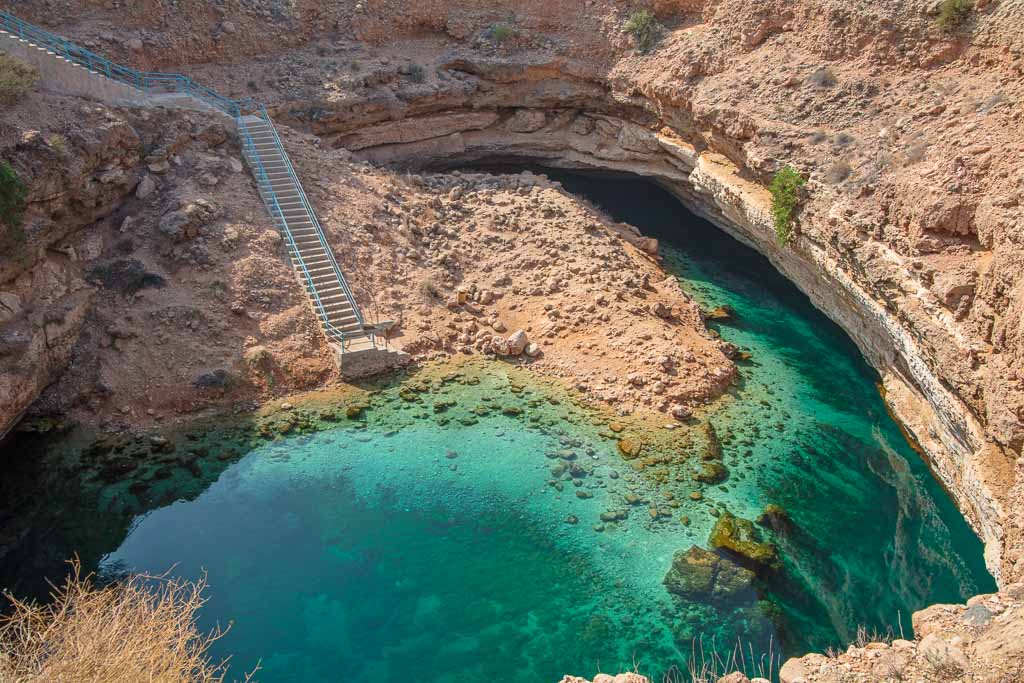
Bimmah Sinkhole, located in Oman, is a stunning natural wonder characterized by its mesmerizing turquoise waters, inviting visitors to take a refreshing dip in its crystal-clear pool. Formed by the collapse of limestone over time, this captivating sinkhole offers a unique swimming experience, blending fresh and brackish water while surrounded by picturesque rocky formations and lush greenery.
-
Ras Al Jinz:
Ras Al Jinz Turtle Reserve, while considered off-season in February, still provides valuable insights into vital conservation efforts for endangered sea turtles and the chance for occasional sightings. Visitors can engage with knowledgeable guides at the reserve, exploring its interactive museum and learning about the ecological significance of the area, making it an enriching experience even during quieter months.
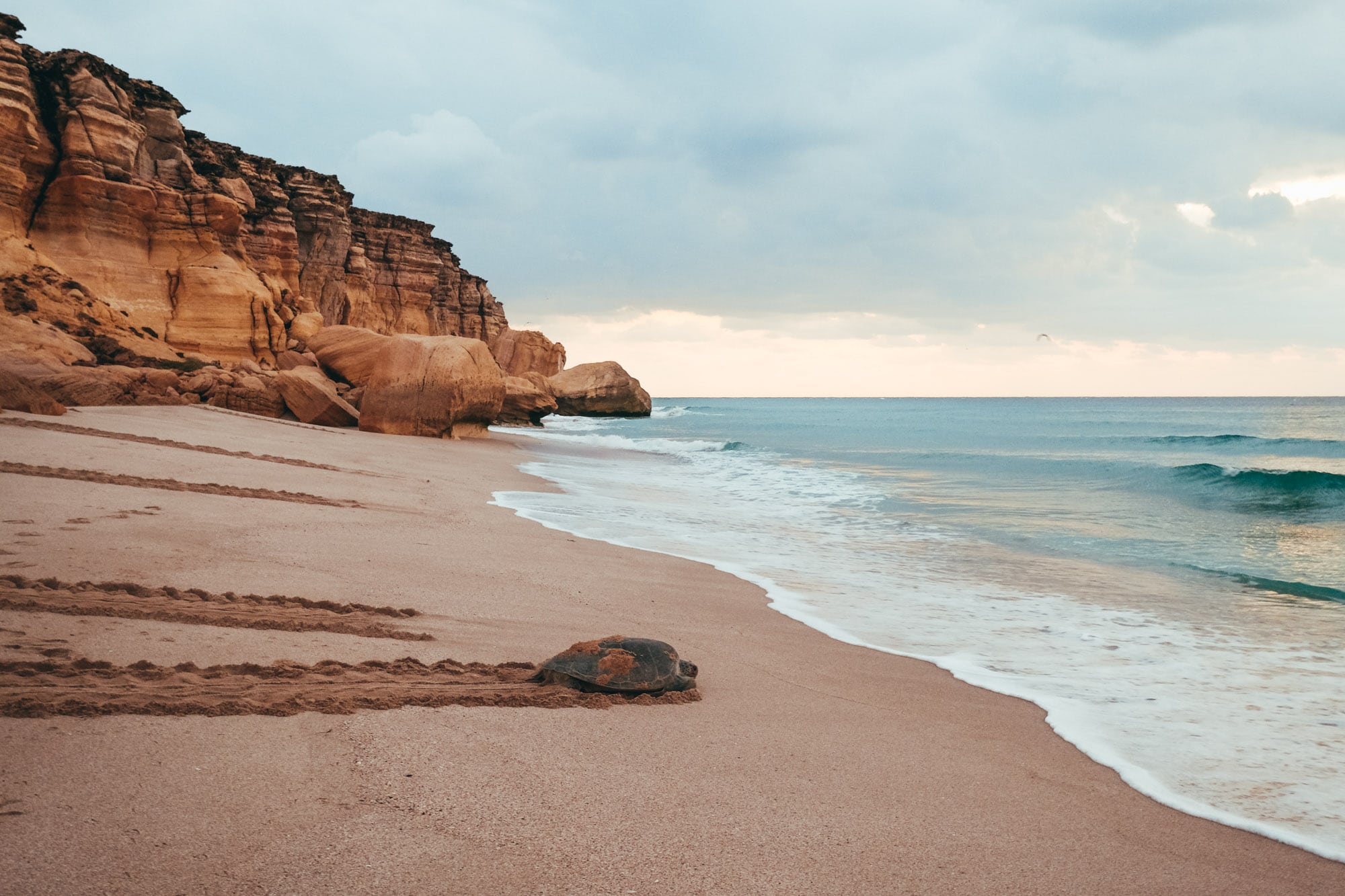
Urban Experiences
-
Royal Opera House Muscat:
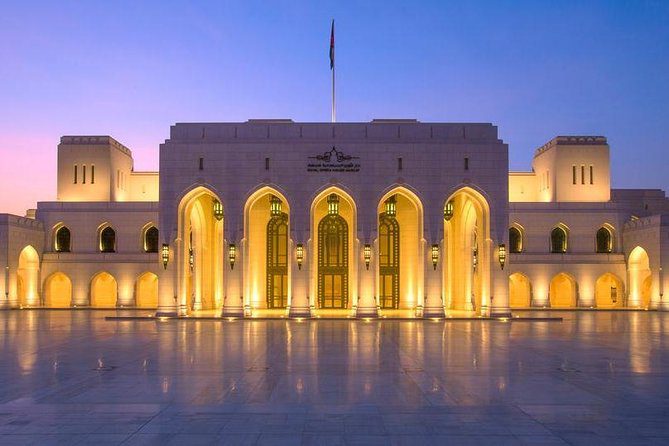
The Royal Opera House Muscat is a cultural gem that invites you to immerse yourself in the arts through a diverse array of captivating performances, ranging from operas to concerts and ballets. With its stunning architecture and vibrant programming, this venue not only showcases world-class talent but also enriches the cultural landscape of Oman, making each visit a memorable experience.
-
National Museum of Oman:

The National Museum of Oman is a premier cultural institution that invites visitors to discover the country’s rich history and cultural heritage through its impressive collection of over 5,000 artifacts. Spanning from the earliest human settlements to contemporary times, the museum features 14 permanent galleries that showcase Oman’s maritime history, traditional crafts, and significant archaeological finds, making it a must-visit for anyone interested in understanding the nation’s identity.
-
Al Alam Palace:
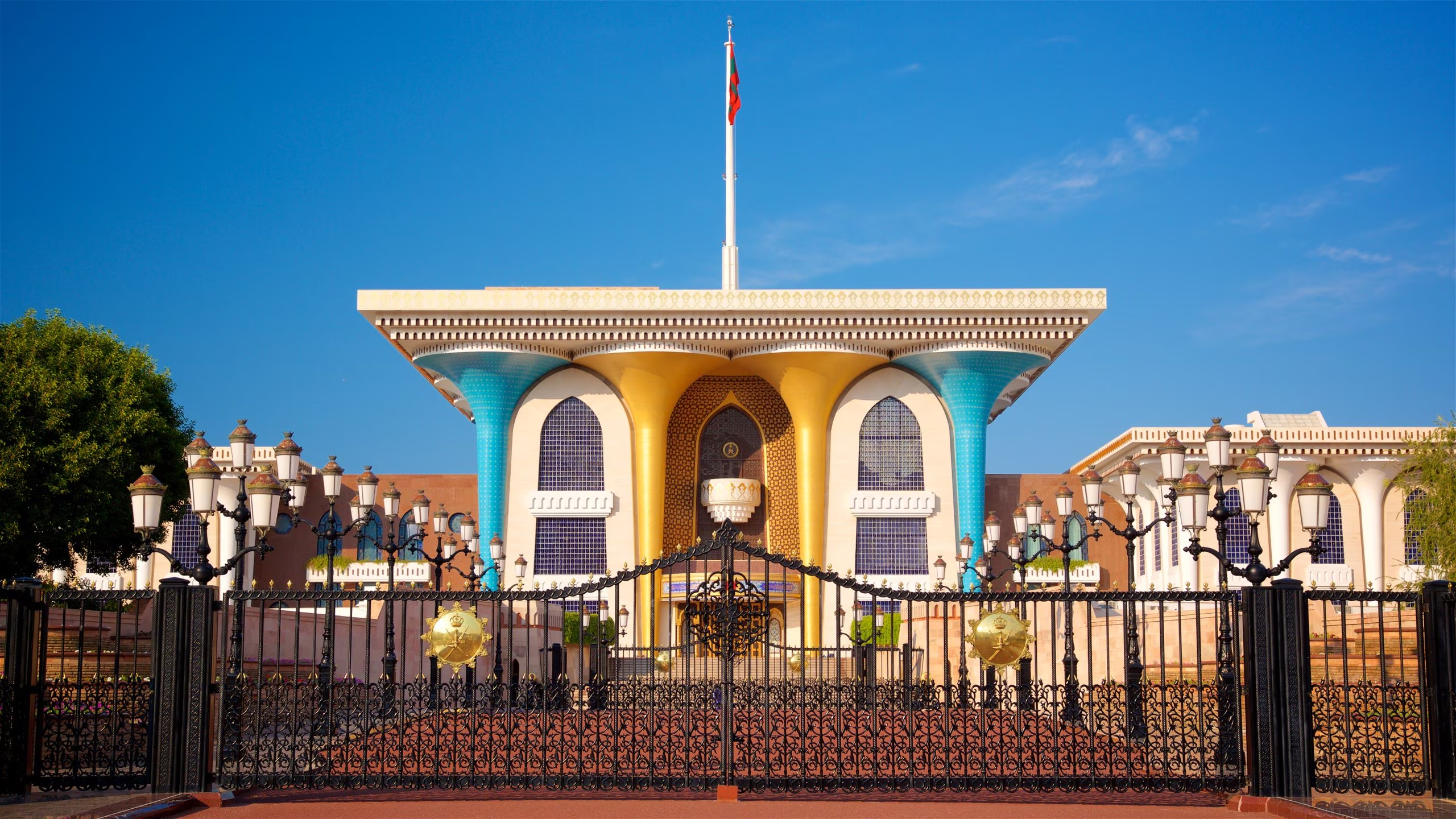
Al Alam Palace, known as the “Palace of the Flag,” is a stunning ceremonial residence of Sultan Qaboos bin Said, showcasing an elegant blend of traditional Islamic and contemporary architectural styles. Surrounded by the historic Al Jalali and Mirani forts, the palace’s vibrant blue and gold façade, along with its lush gardens, creates a picturesque setting that captivates visitors, even though the inner grounds remain off-limits.
-
Mutrah Corniche:

Mutrah Corniche is a picturesque waterfront promenade in Muscat, stretching for three kilometers along the coast and offering stunning views of the Gulf of Oman and the majestic Hajar Mountains. Lined with vibrant souks, charming cafes, and traditional architecture, it provides the perfect setting for leisurely strolls while immersing visitors in the rich culture and hospitality of Oman.
Top 5 things to do in Oman in February
1. Explore the Sultan Qaboos Grand Mosque
Visit this architectural marvel in Muscat, which can accommodate up to 20,000 worshippers. The mosque is open to non-Muslim visitors from 8 AM to 11 AM, Sunday to Thursday, allowing you to appreciate its stunning design and intricate details.

2. Swim in Wadi Shab
Experience the natural beauty of Wadi Shab, known for its turquoise waters and scenic hiking trails. A 30-minute trek leads you to a picturesque swimming spot where you can dive into refreshing pools and even discover a hidden waterfall within a cave.
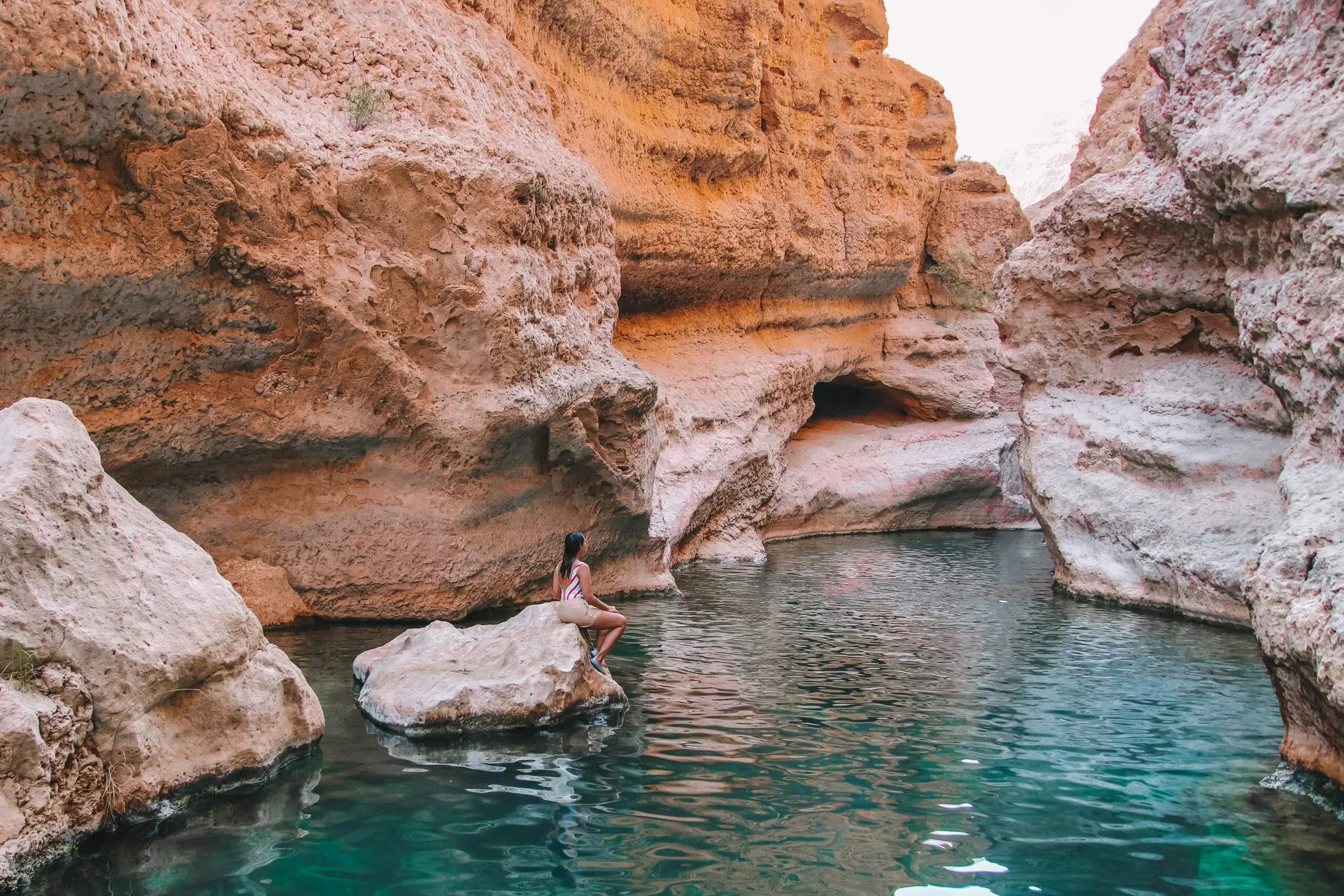
3. Shop at Muttrah Souq
Immerse yourself in Omani culture by wandering through the vibrant Muttrah Souq. This traditional market is perfect for picking up local handicrafts, spices, and frankincense while enjoying the lively atmosphere and engaging with friendly vendors.

4. Witness Baby Turtles Hatch at Ras al Jinz
Visit the Ras al Jinz Turtle Reserve, one of the few places globally where you can observe both nesting turtles and hatchlings. This unique experience highlights the conservation efforts for green turtles and provides an unforgettable wildlife encounter.
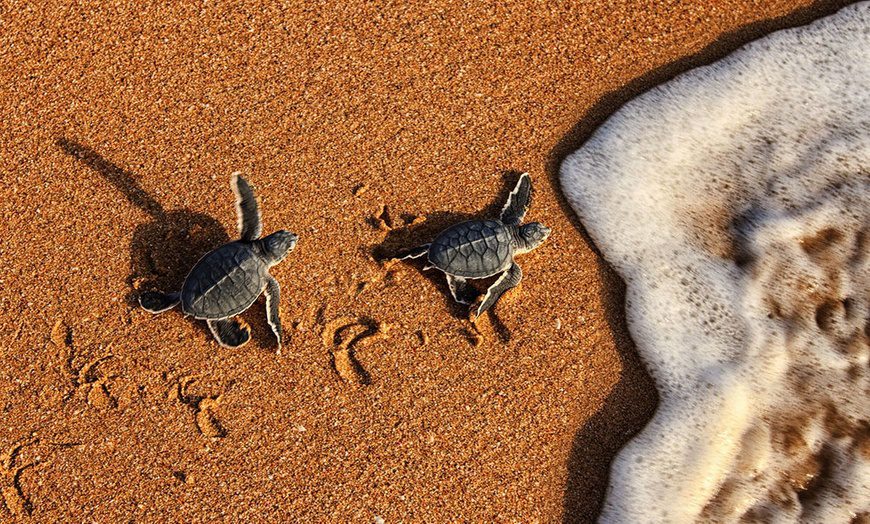
5. Adventure in Wadi Bani Khalid
Known for its stunning natural pools and lush surroundings, Wadi Bani Khalid is perfect for swimming and relaxing. The wadi offers various spots for picnicking and enjoying the serene landscape, making it a great day trip destination in February’s pleasant weather.
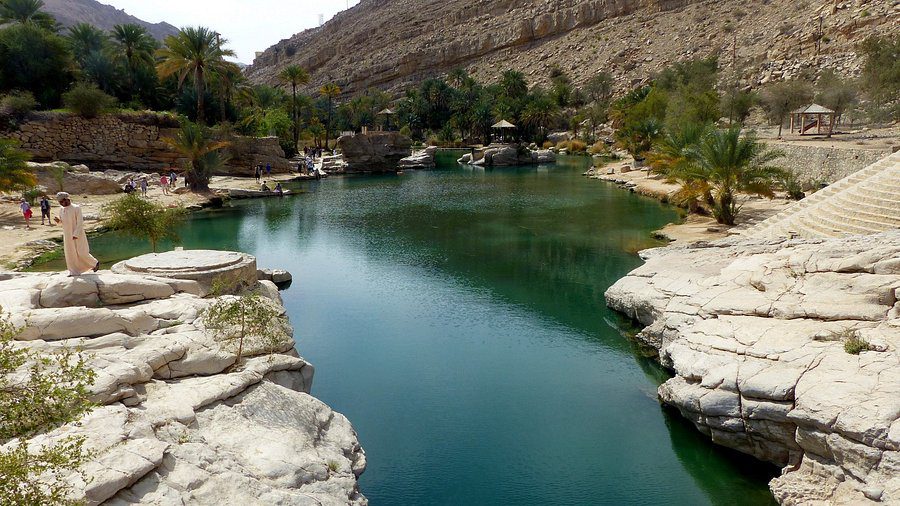
Average Travel Cost from India to Oman
Flights
- Mumbai to Muscat: Expect round-trip fares ranging between ₹20,000–₹30,000, depending on the season and booking timing.
- Delhi to Muscat: Fares for round trips typically fall between ₹25,000–₹35,000, with occasional discounts during off-peak months.
- Best airlines: Oman Air, Air India, and IndiGo are the most reliable options offering comfortable travel and frequent flights.
Pro Tip: To secure the best prices, book your tickets 6–8 weeks in advance and monitor for special offers or promotions.
Accommodation (per night)
- Budget hotels: These cost ₹3,000–₹5,000 and are ideal for travelers seeking basic amenities and clean rooms in convenient locations.
- Mid-range hotels: Priced at ₹6,000–₹12,000, these provide enhanced comfort, on-site dining, and better facilities.
- Luxury resorts: Starting at ₹20,000 and above, these cater to premium travelers with world-class amenities, private beaches, and fine dining experiences.
- Desert camps: A unique option costing ₹8,000–₹15,000 per night, offering immersive experiences like stargazing, camel rides, and traditional Omani meals.
FAQs
1. Is it okay to wear swimwear at Omani beaches in February?
Public beaches require modest swimwear. Women should opt for one-piece suits or wear cover-ups. Private hotel beaches and pools are more relaxed about swimwear choices.
2. Do I need a 4×4 vehicle to explore Oman in February?
For city exploration and main highways, a regular car is sufficient. However, if you plan to visit attractions like Wahiba Sands, Jebel Akhdar, or remote wadis, a 4×4 is mandatory. Many car rental companies won’t allow regular vehicles on mountain or desert routes, and some areas are only accessible by 4×4.
3. Is February suitable for desert camping in Oman?
February is one of the best months for desert camping! Daytime temperatures are pleasant for activities, and while nights can be cool (around 15°C/59°F), it’s comfortable with proper bedding. Just ensure you book with a reputable camp as solo camping in the desert isn’t recommended for tourists.
4. Are most tourist attractions open during February?
All major attractions are open, and February falls within peak tourist season. The Muscat Festival, if scheduled, adds extra activities and entertainment options. However, Friday mornings may see some closures or reduced hours due to prayers, so plan accordingly.
5. Do I need to book accommodations in advance for February?
Absolutely! Oman in February is the peak tourist season. Premium hotels, desert camps, and mountain resorts often get fully booked weeks in advance. It’s recommended to book at least 2-3 months ahead, especially for weekend stays and popular locations like Jebel Akhdar.





